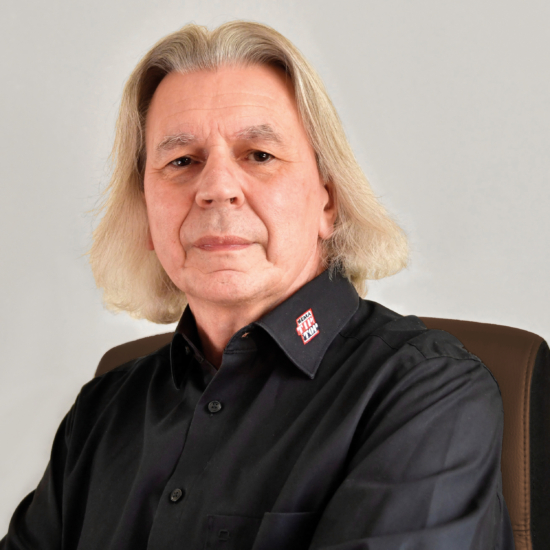Methods, limits and technical requirements of professional tyre repair
 Ludwig Ketzer is Head of Global Product Management & Application AUT (Automotive) at Rema Tip Top AG (Photo: Rema Tip Top)
Ludwig Ketzer is Head of Global Product Management & Application AUT (Automotive) at Rema Tip Top AG (Photo: Rema Tip Top)
Defective tyres do not have to be replaced immediately, if they are repaired professionally. In many cases, mid-life tyres can be repaired professionally and remain in safe use for a significant length of time. This helps to protect the environment and the car owner’s wallet, according to Ludwig Ketzer has been working at tyre repair specialist Rema Tip Top for almost 40 years. Ketzer and Rema Tip Top aim to ensure that tyres are used for as long as possible in order to avoid waste, CO2 emissions and raw material consumption. Here he explains common methods and limits of tyre repair and what workshops need to offer for professional tyre repair.
Tyres & Accessories: Saving raw materials and CO2 emissions as well as cost benefits clearly make the case for repairing car tires. What are the technical or economic limits to tyre repair?
Ludwig Ketzer: Minor surface rubber repairs without penetration or ply damage using penetration filling material only, are permitted anywhere on the exterior of the tyre without limits. Whether major damage to the tread and sidewalls of the tyre can be repaired depends on the size of the in-jury and the speed rating of the tire. This is specified in the BSAU159 standards. For example, V-tyre repair is limited to 8 mm diameter for damage in the tread and 3 mm along and across chords on the sidewall, lower limits apply to H tyres. injuries within these limits can be repaired quickly and reliably. Damage to the sidewall is repaired with hot vulcanization. Puncture wounds in the tread can be repaired very easily with combi-systems, e.g. the TÜV-certified Minicombi from Rema Tip Top, for extensions of 3-6 mm. For larger injuries up to 10 mm, hot vulcanization is used.
T&A: What needs to be considered when repairing passenger car tyres? Which repair methods are used and what are the differences between them?
LK: The repair must permanently seal an injury and completely restore the strength of the bond. The standard method is hot vulcanization, where the damage is filled with a special repair rubber and the carcass is strengthened with an appropriate repair patch. This procedure requires special equipment and takes longer than cold repair – about 50 minutes plus cooling, installation is possible immediately after cooling. In cold repair, a combi-system consisting of a plate and shaft is used, which has a bonding layer; the plate and shaft are already vulcanized, i.e. elastic. A vulcanizing solution accelerates or activates the bonding layer at room temperature. This allows the tyre to be remounted very quickly and used immediately.
T&A: What do workshops require to perform professional tyre repairs?
LK: The legal basis for repairs to tyres for motor vehicles used on the public highway in the UK is specified in the BS AU 159G. It regulates both the repair of diagonal ply and radial ply pneumatic tyres for motorcycles, scooters, cars, commercial and agricultural vehicles for use on the public highway, as well as the inspection procedures, performance criteria, repair materials, and marking requirements, for both tubed and tubeless tyres. A professional workshop must be able to assess the tyre and check whether it is worthy of repair and repairable. If this is the case, the tyre may be repaired. Education and training play an important role in tyre repair. That’s why we educate businesses in the use of different repair systems for motorcycle, passenger car, truck, farm tractor and EM tyres at the Rema Tip Top Academy in Poing near Munich, Germany.
In general, specialized tyre professionals should carefully follow the instructions of tyre manufacturers and trade associations, especially the British Tyre Manufacturers’ Association (BTMA), as well as the recommendations of the manufacturers of repair systems and materials.
T&A: What workshop equipment is needed to repair tyres professionally?
LK: This essentially depends on the tyre types and the repair method. Workshops need significantly less space for repairing passenger car tyres than for truck or heavy-duty vehicle tyres. At its simplest, a partitioned repair area with a bright and clean workstation for cold repairs and a store for repair materials and tyres is sufficient. More space is usually required for hot vulcanization. In addition, a vulcanizing unit, an air connection and/or compressor and a storage area for repair materials, which must be cool, dark and dry for rubber. In any case, it pays to plan more space for tyre repair rather than too little. Rema Tip Top will gladly advise its customers on details in individual cases or in training courses for specialized workshops.



Comments